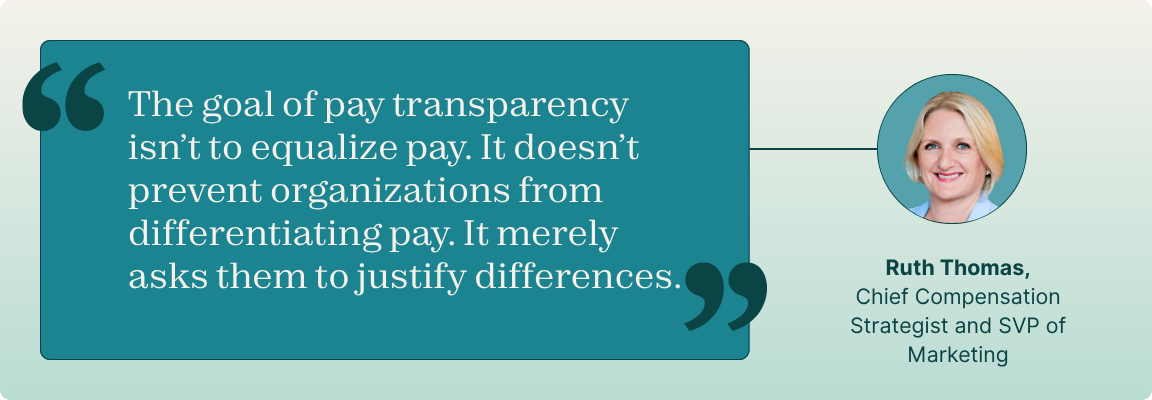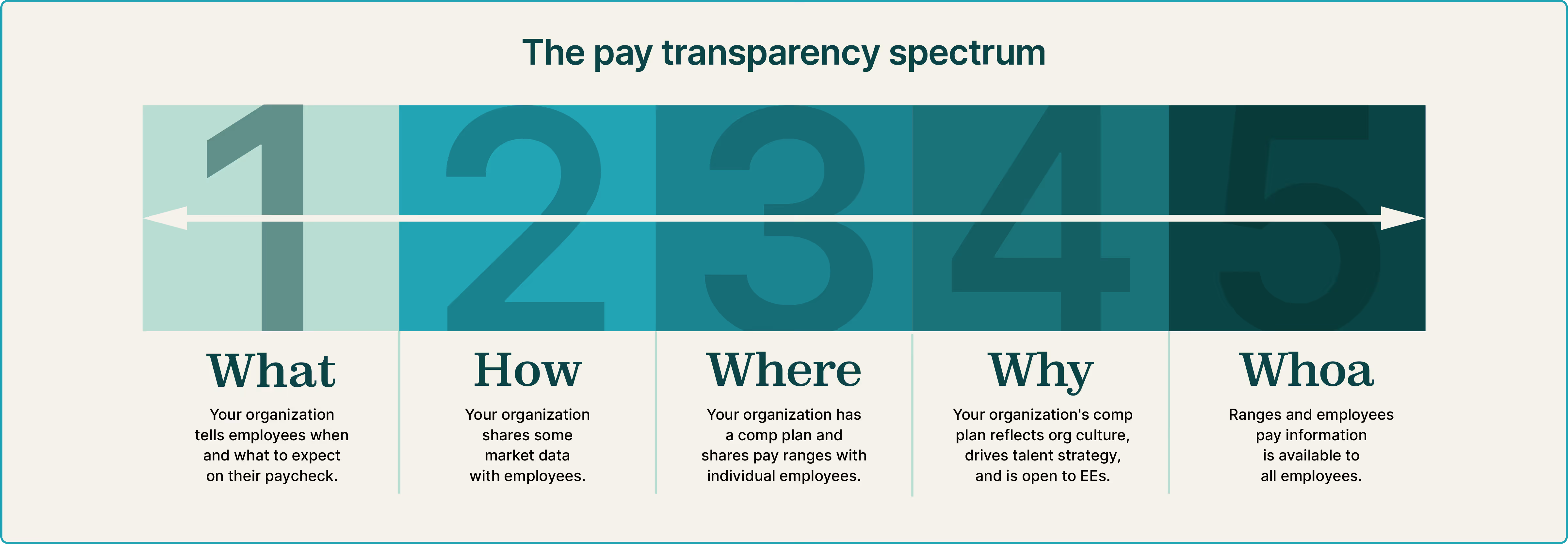There's a fear I often hear about pay transparency: it will make everyone's pay identical.
Critics argue that pay transparency will limit employers' ability to reward high performers or negotiate special incentives. Additionally, companies will lose their competitive edge because they can't differentiate pay for in-demand roles (think AI Engineers).
Here’s the truth: transparency doesn’t erase differences in pay — it demands employers justify them.
Pay transparency doesn’t mean identical pay. Instead, it asks companies to bring greater clarity and rigor to their compensation decisions.
Much of the confusion stems from a fundamental misunderstanding of pay equity and pay equality. This ambiguity is causing a lot of unnecessary handwringing from economists and business leaders alike.
Pay equity is not pay equality
We’re all guilty of using the term “equality” when we mean equity. It’s an easy mistake to make. After all, it’s called The Equal Pay Act of 1963, not the The Equity Pay Act of 1963.
Let’s tease out the distinction.
Equality refers to everyone getting the same thing. I can see why this would be a threat to compensation programs. If employees in a similar role received the same salary regardless of performance, specialized skills, etc., it would present problems for differentiating pay sensibly.
But that’s not pay equity. With pay equity, employees receive different rewards to achieve fair outcomes. People are paid based on their role, experience, skills, etc., even if the amount differs.
The goal of pay transparency isn’t to “equalize pay,” whatever that means — some Marxist commitment of “to each according to their needs” perhaps? Pay transparency doesn’t prevent organizations from differentiating pay. It merely asks them to justify discrepancies. That's the hardest part of implementing it.

For instance, the EU Pay Transparency Directive will force companies to justify drivers to pay differences. Companies will have to provide employees information about their pay on request. They'll also have to make the criteria used to determine pay, levels, and pay progression easily accessible to workers. This criteria must be objective and gender-neutral.
In other words, you can pay two employees differently. You just need to explain why with justifiable, gender-neutral criteria.
Critics sometimes paint pay transparency as a slippery slope toward forced equality. Don’t buy it. The entire movement, from the EU Directive to state-level U.S. laws, is built around explainable compensation decisions.
Coincidentally, this is what your employees want as well.
Transparency strengthens employee pay perceptions
In our recent Fair Pay Impact Report, we unearthed a startingly discovery: 66% of employees who are paid fairly believe they’re underpaid.
Pay perceptions matter as much (if not more) than what’s actually in an employee’s paycheck.
Poor pay perceptions have all sorts of negative consequences from the inability to retain top talent to lower productivity.
The solution? It's pay transparency.
For the purposes of our research, we looked at the correlation between employee job seeking and their organization’s commitment to transparent pay practices. We used our pay transparency spectrum below as a guide.

At the most transparent organizations (Level 5), employees were 59% less likely to leave their organization compared to Level 1. At the same time, employees working for a Level 1 organization were 142% more likely to seek employment elsewhere.
The takeaway? When employees understand how their pay is determined and trust that compensation decisions are fair, they’re much more likely to stay.
This should give us pause. Our research didn’t show that employees expect equality. They simply want to know the “why” behind their pay. What’s their salary range? What’s the rationale for this decision? What’s their path forward at your organization?
This isn’t to say pay transparency doesn’t come with its challenges as well noted above. It requires you to clean your compensation data (all of it) and conduct a pay equity analysis.
You need a strong job architecture, consistent pay practices, and a budget for remediation.
You may also have short-term wage compression if you overcorrect for pay disparities.
While none of these obstacles are insurmountable, you do need a plan.
Preparing for pay transparency
Let’s quickly recap: Pay transparency doesn’t mean everyone will be paid the same. It doesn’t eliminate your ability to reward performance or differentiate compensation based on valid criteria like skills and experience.
What does it do? Improve retention. Transparent pay practices keep your best people from walking out the door. You should want this, even if laws aren’t forcing you to do it.
Here’s your step-by-step process for getting started:
- Benchmark your roles with HR-reported data: Gather salary data from reputable HR-reported sources such as third-party surveys or employer-reported data in compensation management solutions. Compare this data to your current pay ranges to make informed adjustments.
- Build pay ranges for every role: Create salary ranges for every role using your HR-reported market data and internal equity considerations. Consider other compensable factors such as experience for range maximums and minimums.
- Use job leveling and market data to create pay structures: Group roles by job families, responsibilities, and seniority. Assign appropriate salary bands to ensure internal equity and create a clear path forward for each role.
- Decide how transparent you want to be: As we saw, pay transparency exists on a spectrum. On one end, you’re only telling employees their pay. On the other, you’re disclosing the salaries of your entire organization. Don’t worry: most organizations aren’t ready for this level of radical transparency (Payscale isn’t). Decide what level of transparency builds a culture of trust. Pro Tip: Level 4 above is typically the sweet spot for organizations.
- Make fair pay sustainable: At its core, pay transparency is about building a compensation program that fairly compensates employees. You also need to ensure your program is financially viable. Balancing internal equity with performance rewards and budgeting for remediation (if necessary) can be difficult.
While pay transparency won’t destroy your pay structures or ability to compete for talent, it will require you to come up with defensible explanations for your compensation practices.
Pay transparency is coming: whether through the EU Pay Transparency Directive, U.S. state laws, or simply competitive pressures as your peers become more transparent about pay.
Payscale has the data, systems, and comp expertise to help you embrace pay transparency with confidence.





.avif)
